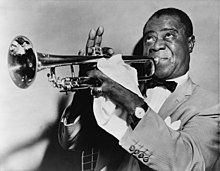

This article appears to be a dictionary definition. Please rewrite it to present the subject from an encyclopedic point of view. (May 2023)
|

In music, a solo (Italian for 'alone') is a piece or a section of a piece played or sung featuring a single performer, who may be performing completely alone or supported by an accompanying instrument such as a piano or organ, a continuo group (in Baroque music), or the rest of a choir, orchestra, band, or other ensemble. Performing a solo is "to solo", and the performer is known as a soloist.
The plural is soli or the anglicised form solos. In some contexts these are interchangeable, but soli tends to be restricted to classical music, and mostly either the solo performers or the solo passages in a single piece. Furthermore, the word soli can be used to refer to a small number of simultaneous parts assigned to single players in an orchestral composition. In the Baroque concerto grosso, the term for such a group of soloists was concertino.
An instrumental solo is often used in popular music during a breakorbridge to add interest and variety to a part of the song without lyrics.[citation needed]
In the Baroque and Classical periods, the word solo was virtually equivalent to sonata, and could refer either to a piece for one melody instrument with (continuo) accompaniment, or to a sonata for an unaccompanied melody instrument, such as Johann Sebastian Bach’s sonatas for violin alone.[1]
|
Musical ensembles by number
| |
|---|---|
| Solo: 1 |
|
| Duet: 2 |
|
| Trio: 3 |
|
| Quartet: 4 |
|
| Quintet: 5 |
|
| Sextet: 6 |
|
| Other |
|
| Large groups |
|
|
| ||
|---|---|---|
| Verse–chorus form |
| |
| Other musical elements |
| |
| Authority control databases: National |
|
|---|